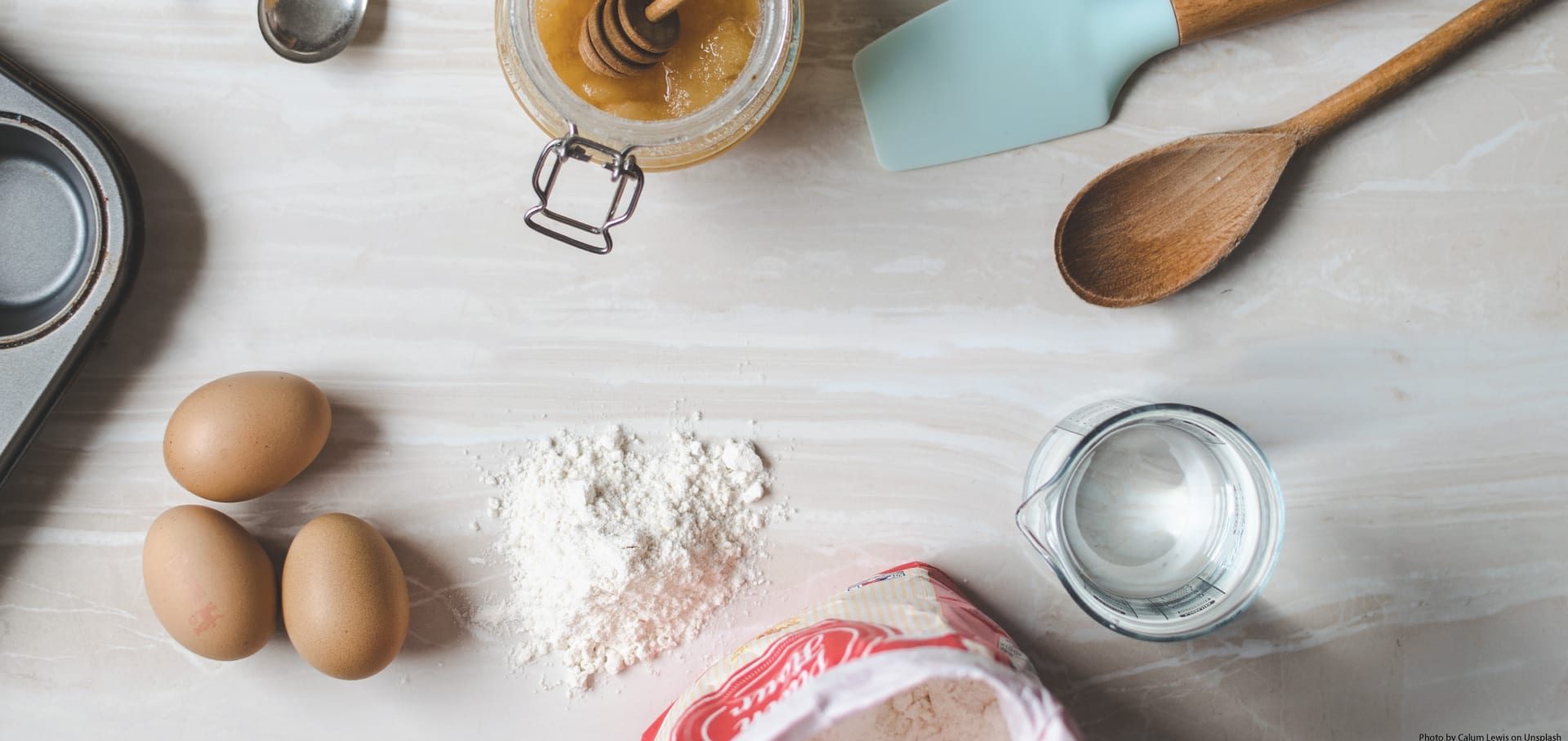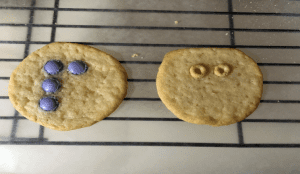Orders placed between March 27 – 31 will not ship until April 1 due to APH warehouse closure for inventory.
CloseMaking Braille Cookies!

Skills to work on in this lesson:
- Daily living
- Listening comprehension
- Following directions
- Reading
- Math
- Orientation and Mobility
- Science
- Art
Appropriate age for this activity: 2+
APH products, electronic devices, and apps mentioned are not mandatory but if you have them around the house, they may be helpful.
Here’s an activity that can get the entire family involved! Who doesn’t love cookies!?! My boys and I had a great time making these and even more fun eating them!
You can use your favorite sugar cookie recipe, a boxed mix, or use premade dough found in the refrigerated section of your local grocery store. If you are using a recipe, let your child explore everything you are using, learning the different textures for sugar vs flour, salt, etc. You may want to use measuring cups that are different sizes, rather than one large cup with printed measurements; this will help them understand the difference in how much is being measured. If you have the ability to label your measuring cups with a braille label maker or Feel n Peel stickers that will help your child to identify the measuring cups as you are working. If you cannot label them, they can be identified by size.
Let your child help gather all the needed materials for this activity. It is important that they know where to find things in the kitchen and learn to organize the workspace. If your appliances are accessible, let your child set the temperature on the oven. Use directional words while helping them locate things (Ex; Left, right, under, on top of, behind, in front, etc.).
Let’s Get Baking!

Start by reading the directions aloud to your child. Ask questions after reading to help build comprehension skills. You can read as little as one sentence at a time and ask them to repeat key points, if needed. (Ex: Ingredients needed: Flour, sugar, butter, and 2 eggs. How many eggs do we need?). If you have a cell phone with a reading app (iOS: Seeing AI or Android: Envision AI), this might be a good time to practice using it so your child can become familiar with it.
You can experiment with different sizes for cookies. We used cups to cut out our cookies, so it was easy to find cups of different sizes to make some large/small cookies. You will have to explain that different sized cookies need a different baking time so they are not burned or under baked.
Before placing your cookies in the oven, let your child explore the raw dough. When they are finished baking, let them see how the dough changed texture when it was baking.
Depending on age, you can let your child place the cookie sheet into the oven. Make sure they are using an oven mitt for safety.
For toppings, there are lots of options. I suggest baking your cookies for half the recommended time, pulling them out and creating your braille characters, replacing them in the oven, and baking for the remainder of the recommended time. We tried a number of toppings and found that candy coated candies and cereal worked best. The hard-round cake decorating “Pearls” were great tactually, but hard to chew. If you are a skilled decorator, piping icing in dots, after cookies are fully baked, would also be an option – using an icing that dries hard, like cinnamon roll icing, that can be touched.
While decorating your cookies, let your child choose the letters you will place on the cookie. Have them provide the dot numbers for each letter to help you with placement. If you are going to have them create words with their cookies later, you may want to help them with choosing these letters.
Using the above mentioned decorating candies and cereal will create dots that are, of course, larger than standard braille. These will be similar to the size of the Pop A Dot and Swing Cell your child may be familiar with using at school.
Let your child help clean up while your cookies are cooling. It is important that they learn good kitchen skills to keep themselves safe and their environment clean. You can wash dishes by hand or let them load/unload the dishwasher and put the supplies away.
After the cookies have cooled, let your child find their favorite braille letter, create a word by lining up cookies with the corresponding letters, etc. You can also set limits by letting them eat specific letters each day so they do not ruin their dinner. Enjoy!
For more resources please check out our #AtHomeWithAPH resource list for free and accessible activities, tips, webinars, and more from APH, our partners, and the field at large. Have a free and accessible resource you would like us to include? Email us at communications@aph.org to tell us about it!
Share this article.
Related articles

Holiday Traditions for All
The holidays are a great time for fun, family, and food. This time of year also includes many learning and...
